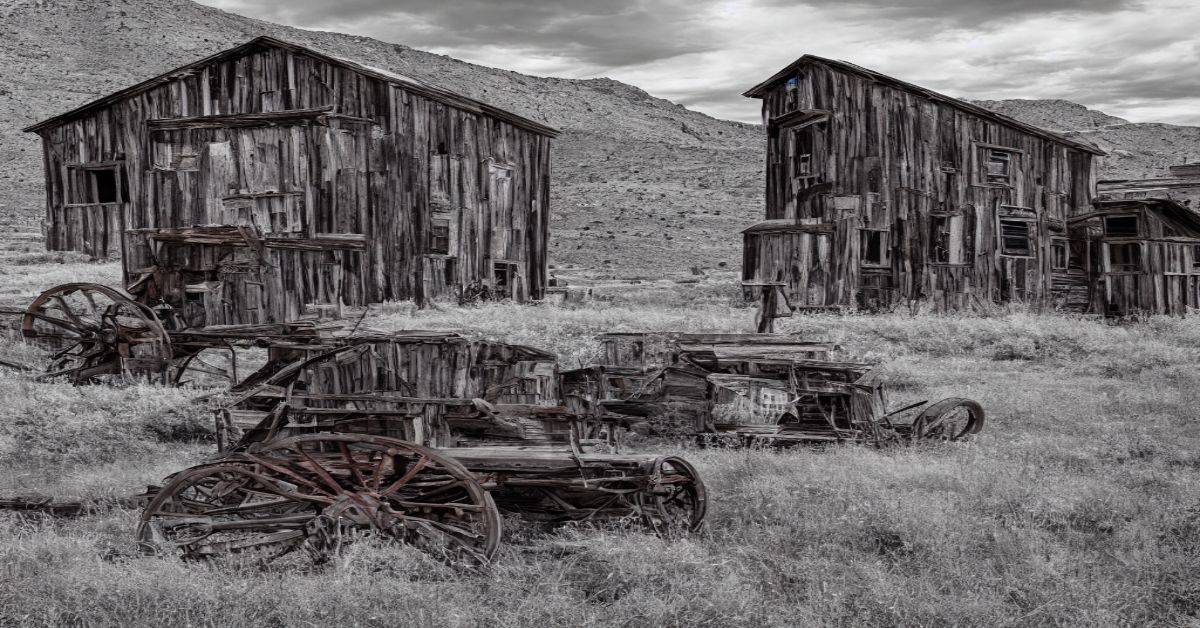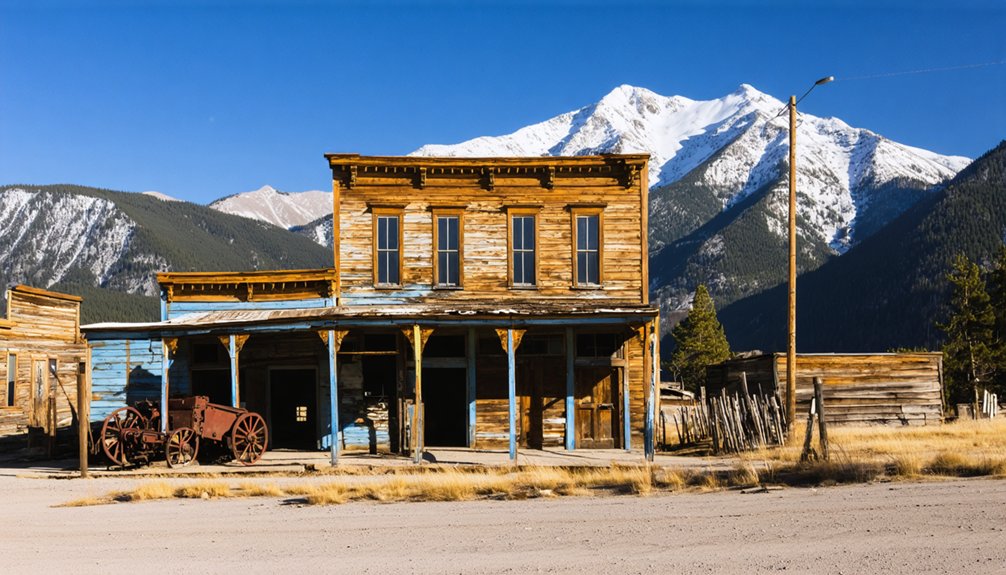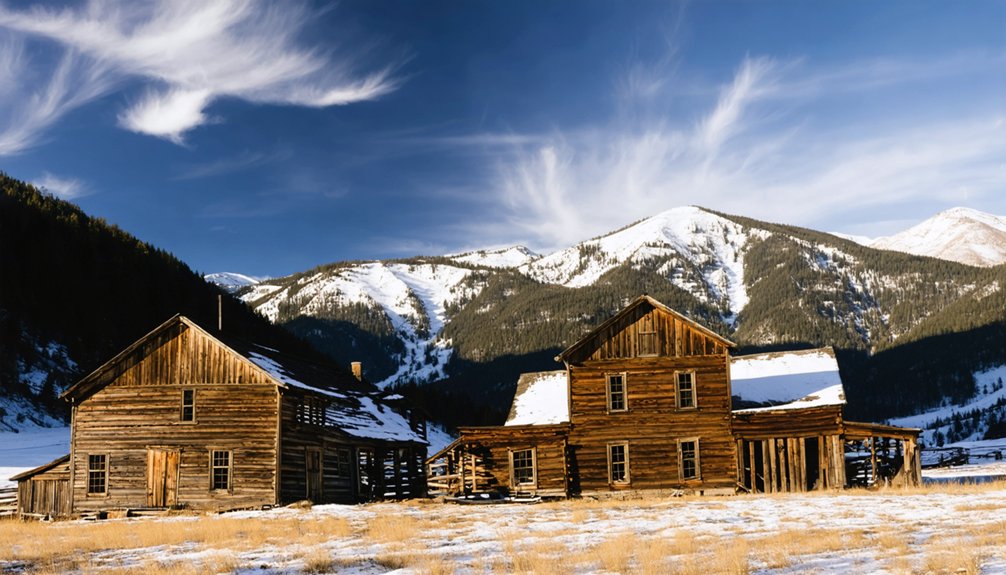Before Colorado became a state, it was included as part of the New Mexico, Utah, Nebraska, and Kansas territories. In 1859, a provisional government was established, and present-day Colorado was known as the Territory of Jefferson.
Two years later, in 1861, the significant increase in population due to the Colorado Gold Rush turned the Territory of Jefferson into the Territory of Colorado. On August 1st, 1876, President Ulysses S. Grant signed Colorado into statehood as the 38th state of the Union.
There are over 1,500 deserted settlements and ghost towns in Colorado. Only 640 of those ghost towns are estimated to have visible remains still. Dearfield, Ashcroft, Alta, Independence, Hancock, and Crystal are some of the most visited sites.
The Pike’s Peak Gold Rush heavily struck the rise of Colorado’s mountain towns in the late nineteenth century. The gold rush attracted an estimated 100,000 gold prospectors to participate in one of American history’s most significant gold rush eras. However, these once prosperous cities quickly faded to dust, leaving the area abandoned as politics and nature shifted.
Independence, Colorado
The site for Independence is a well-preserved town located 13.5 miles east of Aspen. It can be easily accessed in the spring, summer, and fall seasons. However, winter access is challenging due to its 11,000-foot elevation. The town was built around the 1880s and was considered the first settlement in Roaring Fork Valley. It acquired its name because miners struck gold on July 4th, 1879.
Independence reached a population of 150 people and became an incredibly prosperous mining city of 500. The town produced over $190,000 for the Farwell’s Mines company. By the end of 1882, it had 1,500 residents, three post offices, and 47 businesses.
A drop in gold production in 1883 and migration to a new mining settlement Aspen, was the beginning of the end for Independence. In 1899, severe snowstorms also cut off the town’s communication and contact with other cities. As a result, many habitats ran out of food and were forced to evacuate.
In 1912, Independence was declared a ghost town. In 1973, it was recognized as a historic district. If you are interested in visiting this ghost town, here are some of the attractions you can look forward to:
- Exhibitions from the stables, general store, and intern cabin
- Guided tours over the town
Animas Forks, Colorado
Animas Forks is located twelve miles northeast of Silverton in San Juan County. At an elevation of 11,200 feet, it is considered one of the highest mining camps in the United States.
Prospectors built the town’s first cabins in 1873, and by 1876, it had become a crowded mining community. The population rose in 1883, with 450 people living in the area but often moving to warmer towns due to the blizzards that inundated the city with 7.6 meters of snow.
After mining profits started to decrease, the investment in this town became unjustifiable. It tried to resurface briefly in 1904 after the construction of the Gold Prince Mill, but the railroad never met expectations. Animas Forks was declared a ghost town in the 1920s, and in 2011, it was listed under the National Registry of Historic Places.
Here are some adventurous activities you can do in Animas:
- Self-guided tour, and you can take pictures of the area.
- Explore historic buildings such as the Old Hundred Mine and the William Duncan House
Ashcroft, Colorado
Initially known as “Castle Forks City” and “Chloride,” Ashcroft was a mining town located ten miles south of Aspen and eleven miles up from Castle Creek Road. This ghost town features historic buildings, a homestead, a saloon, a post office, and the Bird House Hotel.
Ashcroft was founded in 1880 by prospectors Charles B. Culver and W.F. Coxhead, searching for silver deposits in the Castle Creek Valley. Once they started to promote their discovery, twenty-three prospectors joined the “Crazy Culver,” Together, they formed the Miner’s Protective Association. It was later renamed Ashcroft in 1882 and had over 3,500 people, twenty saloons, and six hotels.
These silver deposits initially produced around 14,000 ounces of silver, but they were shallow. In 1884, a rich strike was found in Aspen, ending Ashcroft’s prosperity and growth. By 1885, only 100 residents lived in the town, and after the death of Jack Leahy (the town’s last resident) in 1939, it officially became a ghost town.
If you want to visit Ashcroft, some of the most popular tourist attractions are:
- Exhibitions of the Blue Mirror Saloon and the Post Office
- Self-guided tour
Dearfield, Colorado
This historically black-majority area in Weld County of Colorado was formed by Oliver Toussaint Jackson, who wished to create an African American colony. Dearfield is situated only 30 miles east of Greeley, its nearby community.
During the late 1910s, Dearfield’s farming community started to bloom, with an upward amount of 300 residents, a school, and two churches established by the end of the 1920s.
However, the Great Depression took the town’s agricultural success, ending it in a significant economic decline. Many settlers began to migrate to other areas in search of better opportunities. By the end of 1940, the population had decreased to only twelve people. Eight years later, in 1948, Oliver Jackson died, and Dearfield became a ghost town.
In 1988, the Black American West Museum tried to preserve the site as much as possible and registered it as a historic landmark.
Even though there are not many tourist attractions, you can visit the remaining buildings, which contain information and history about the town, take a self-guided tour, and experience with your own eyes what it was like living in the plains in the 1900s.
St. Elmo, Colorado
St. Elmo is located 20 miles southwest of Buena Vista and sits at 9,961 feet. It has been claimed that nearly 2,000 people previously settled in this city when mining for gold and silver reached its peak in Colorado.
St. Elmo is considered one of Colorado’s most well-preserved ghost towns. Previously referred to as “Forest City” in the 1880s, Saint Elmo attracted many miners due to its abundant minerals and resources such as gold and silver.
By the end of 1881, the town’s larger population also included many saloons and dance halls. Throughout the town’s prime years in the 1890s, there were over 150 mine claims, a general store, five hotels, and a telegraph office.
However, all this rapid abundance seemed to die down once the train service of Chalk Creek Canyon closed in 1926. It marked the end of the town’s success, and by 1958 it was finally declared a ghost town.
Interestingly, a few people and businesses still operate in this area. Here are some splendid tourist attractions in St. Elmo:
- Visit the general store for souvenirs, snacks, and drinks
- Rent a cabin
- Ghost Town Guesthouse with bed and breakfast inside the city
Conclusion
It is undeniable the vast and rich history of how Colorado’s most prosperous mining towns ended up being abandoned and deserted because of the economic decline, lower profits of silver and gold, natural disasters, or political disputes. Most of the tourist attractions available in these areas are exhibitions and self-guided tours, making it possible to enjoy their history and understand people’s living conditions at the time.



